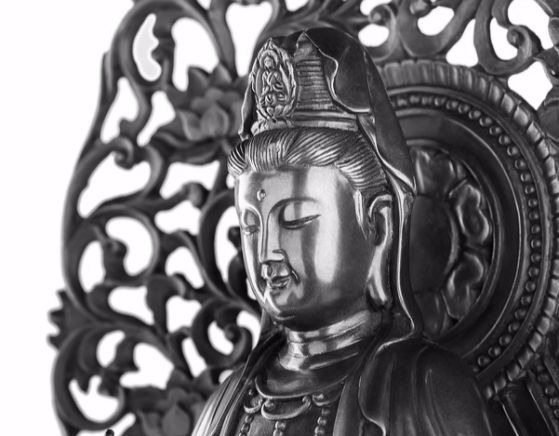The Secret Traditions of Gnosis and Tantra.

{source}
What are the Secret Traditions that acknowledge the Divine Feminine?
The two secret traditions that included the Goddess, or some other form of the Divine Feminine, were some Gnostic Schools in early Christianity, and Tantra in Hinduism.
There were, of course, other traditions, but the reason why I am discussing these two first is that they considered the Goddess beyond her Holy Mother aspect and allowed her other personalities, including the feminine representation of God’s wisdom.
By secret, I mean spiritual traditions which have been repressed by mainstream institutionalized religions.
It is a sad and complicated story many scholars and philosophers have observed that when divine knowledge is transmitted to us via some greater being (be it Jesus, Buddha or Krishna) the message is watered down and altered by people who come after them and, who, often with good intentions, try to adjust the message of the greater being to whatever the beliefs of people are at the time.
In the process, they often conceal or judge inappropriate the more radical elements of the message. It is no secret that even today, even in Western societies , the idea of the Divine Feminine, for whatever strange reason, is considered threatening to mainstream religions.
But whatever is repressed and hidden, as Carl Jung says, has to eventually reassert itself, and so do these ancient traditions. Right from the beginning, for example, many followers of Jesus (his proper name in Aramaic, the language he spoke, is Yeshua) did not comply with these restrictions in Jesus’ teachings.
It is perhaps not common knowledge that there were other Gospels — now called Gnostic Gospels — which have been recently discovered (in 1945 in Nag Hammadi, Egypt, and translated into modern languages) and which discuss the Divine Feminine, among them are the Gospel of Mary Magdalene and the Gospel of Philip. In these two Gospels, Mary Magdalene is considered the Divine Feminine in Jesus’ life.
The Gnostics disagree with the official interpretation of Jesus’ teachings and how they have been controlled and institutionalized. The teachings were spread throughout ancient Alexandria (which was the cultural capital of the world in the first centuries AD) and in early monasteries of Egypt and Syria.
Secret knowledge to them was inner knowing and a focus on the inner relationship with the Divine and awakening of the Divine within. In some Gnostic documents, Mary Magdalene was known as Sophia, or the manifestation of God’s wisdom. Indeed, Sophia was the first name for the Holy Spirit.
The term Sophia (God’s wisdom) was changed to Holy Spirit only when the Bible was translated from Greek to Latin; the feminine noun Sophia as the Wisdom of God was translated into Latin as Spiritus Sanctus (Holy Spirit). This simple translation neutered the Goddess, one might say, and led to the loss of this particular feminine presence and significance in Christianity.
Christianity is not the only religion that has a secret tradition. In Hinduism, the part of the secret tradition of the worship of the Divine Feminine is known as Tantra. So what is Tantra? To answer this question, please let me share a paragraph from my book in progress, The House of the Beloved.
The briefest possible explanation is that it is a subversive branch to prescribed religious teachings of the times. Unlike other traditions, where one needed to be a man — and a man of the highest caste at that — to study the ancient knowledge about the origins and nature of the world.
According to Tantric scholars, first Tantras were written around 400 A.D. But the most radical Tantra came from a woman philosopher called Ardha (half) Tryambaka.
These teachings were intended not only for men of all classes but also for women — something unthinkable in those days, where religion was full of prohibitions and you had to be a man and a Brahmin to read and teach the Scriptures.
But Tantra was different. Tantra not only teaches the inclusion of everyone, but also strives to change the way we view the world. For a Tantric, the entire world is the expression of the Divine.
Like the Goddess, it embraces everything and everyone. In Tantra, there is no evil, no Satan. Everything comes to life in the Divine consciousness, and everything dissolves into it again. All things good and bad return to their original Source.
Tantra also has its secret rituals which are meant to worship the Divine Feminine, the all-powerful Shakti. In Tantra, Shiva (God) is only an empty corpse without Shakti. She is his reason for creation, and his first creation at the same time.
Shakti in Hinduism, like Sophia in Christianity, represents the Divine Feminine, the rightful and honored place of the Goddess in the Universe that waits for us to find her within ourselves in our lives so She can nourish us with her wisdom.
***
Dr. Joanna Kujawa is the author of Jerusalem Diary (a spiritual travelogue) and many short stories, essays and academic pieces. She sees herself as a Spiritual Detective who asks difficult questions about spirituality, such as ‘Can spirituality and sexuality be experienced as one?’, ‘Who was the real Mary Magdalene?’, ‘How can we include eco-spirituality in our belief systems?’ and ‘How can we bring back the Divine Feminine to create a more balanced and interconnected world?’ Her goal is to create and participate in the shift in consciousness about spirituality, our connection to nature, and our place in the Universe. She has PhD from Monash University, and MA and BA from the University of Toronto. She is immoderately passionate about her Goddess News blog. You could connect with her via her website, Facebook, Twitter or YouTube.
***
{Join us on Facebook, Twitter, Instagram & Pinterest}

